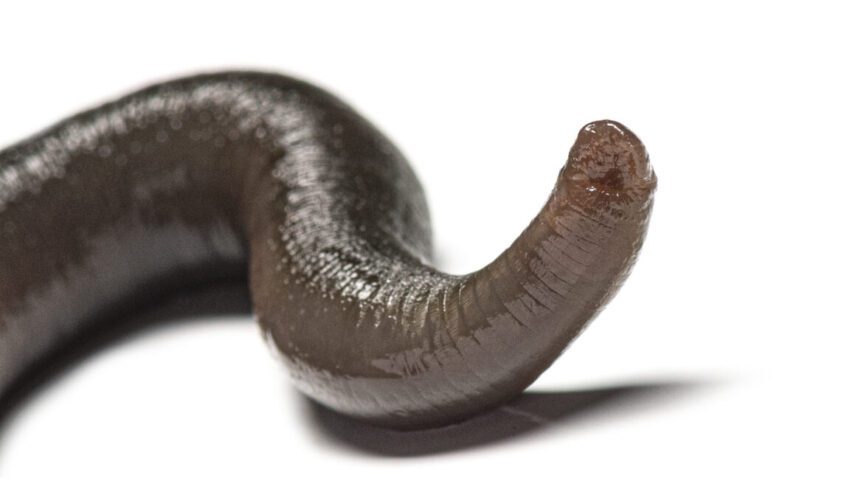
man accidentally gets leech up his nose A recent incident involving a man who unknowingly had a leech lodged in his nose for 20 days has sparked renewed interest in the historical and medical significance of these creatures.
man accidentally gets leech up his nose
The Historical Context of Leeches in Medicine
Leeches have been utilized in medicine for thousands of years, with their use documented as far back as ancient Egypt. Murals found in the tombs of 18th dynasty pharaohs depict these bloodsucking creatures, highlighting their importance in early medical practices. The first written recommendations for leeches can be traced back to the 2nd century BC, when the Greek poet and physician Nicander of Colophon described their utility in his works.
Nicander’s Contributions
Nicander introduced the concept of the “blood-loving leech,” describing it as “long flaccid and yearning for gore.” He advocated for their use in sucking out poison following bites from venomous animals, suggesting that “let leeches feed on [the] wounds and drink their fill.” This early endorsement of leeches laid the groundwork for their acceptance in various medical traditions.
Leeches in Ancient Cultures
Beyond Greek medicine, leeches were also recognized in ancient Chinese texts, where their medicinal properties were extolled. Similarly, references to leeches appear in Sanskrit literature, indicating a widespread acknowledgment of their therapeutic potential across different cultures. This cross-cultural recognition underscores the leech’s role as a significant medical tool throughout history.
The Roman Era and Galen’s Influence
During the Roman Empire, the use of leeches became more systematic, particularly under the guidance of Galen, a prominent physician who served Emperor Marcus Aurelius. Galen supported the use of leeches as a means to balance the four humors—blood, phlegm, yellow bile, and black bile—a foundational concept in ancient medicine initially outlined by Hippocrates. This theory posited that health depended on the balance of these bodily fluids, and leeches were seen as a method to achieve that balance.
Mechanisms of Action
Medical practitioners discovered that leeches offered a less painful alternative to traditional bloodletting methods. They not only provided localized treatment but also had the ability to release an anesthetic, which helped to minimize pain during the procedure. Additionally, leeches secrete a powerful anticoagulant known as hirudin, which prevents clotting and ensures that blood continues to flow. This characteristic has made leeches particularly valuable in modern reconstructive surgery, where blood flow is crucial for healing.
Leeches in Modern Medicine
Despite the decline in their popularity during the 19th century, leeches have experienced a resurgence in recent years, particularly in the fields of plastic and reconstructive surgery. Their ability to promote blood circulation in reattached limbs and tissues has made them an invaluable resource for surgeons. The FDA even approved leeches for medical use in 2004, recognizing their potential in certain therapeutic contexts.
Current Applications
Today, leeches are primarily used in the following medical scenarios:
- Reconstructive Surgery: Leeches are often employed to improve blood flow in areas where blood supply has been compromised, such as in the case of skin grafts or reattached digits.
- Management of Venous Congestion: In cases where blood accumulates in tissues, leeches can help alleviate pressure and restore normal circulation.
- Pain Management: The anesthetic properties of leech saliva can provide pain relief in certain conditions.
The Recent Incident: A Case Study
The recent case of a man who had a leech lodged in his nose for 20 days serves as a reminder of the unexpected ways in which these creatures can interact with humans. While the incident may seem bizarre, it highlights the need for awareness regarding the potential for leeches to inhabit unusual places.
Details of the Incident
According to reports, the man initially experienced discomfort and nasal congestion but attributed these symptoms to a common cold or allergies. It was only after weeks of persistent issues that he sought medical attention. Upon examination, healthcare professionals discovered the leech nestled within his nasal cavity, leading to a swift removal.
Medical Response
The medical team acted quickly to remove the leech, which had likely entered the man’s nose while he was swimming in a freshwater lake. This incident underscores the importance of being vigilant about potential hazards in natural water bodies, particularly in regions where leeches are prevalent.
Implications and Public Awareness
This unusual case raises several important questions regarding public awareness and education about leeches and their habitats. While leeches have a long-standing history in medicine, many people remain unaware of their potential risks, especially in natural settings.
Health Precautions
Individuals who engage in activities such as swimming in freshwater lakes should take certain precautions to minimize the risk of leech encounters:
- Wear Protective Clothing: Long pants and socks can help reduce skin exposure and deter leeches from attaching.
- Avoid Sitting on the Ground: Sitting directly on the ground near water bodies can increase the likelihood of leech contact.
- Check for Leeches: After swimming or wading in freshwater, individuals should carefully inspect their bodies for any attached leeches.
Stakeholder Reactions
The medical community has expressed a mix of concern and intrigue regarding the incident. While some healthcare professionals emphasize the need for increased public education about leeches, others highlight the importance of understanding their historical significance and potential medical benefits.
Public Health Officials
Public health officials have called for greater awareness campaigns to educate the public about the risks associated with leeches in natural water bodies. They stress the importance of understanding how to recognize and respond to leech encounters, as well as the potential health implications.
Medical Professionals
Medical professionals have also reiterated the importance of recognizing unusual symptoms and seeking timely medical attention. The case serves as a reminder that not all health issues can be attributed to common ailments, and unusual presentations should be taken seriously.
Conclusion
The incident involving the man with a leech in his nose serves as a fascinating case study that intertwines historical medical practices with modern-day implications. While leeches have been utilized for therapeutic purposes for centuries, this unusual occurrence highlights the need for public awareness about their potential risks. As we continue to explore the complexities of human interactions with nature, understanding the historical context and modern applications of leeches can help inform our approach to health and safety.
Source: Original report
Was this helpful?
Last Modified: October 29, 2025 at 9:38 pm
3 views















